I am a Dog Trainer and Human educator
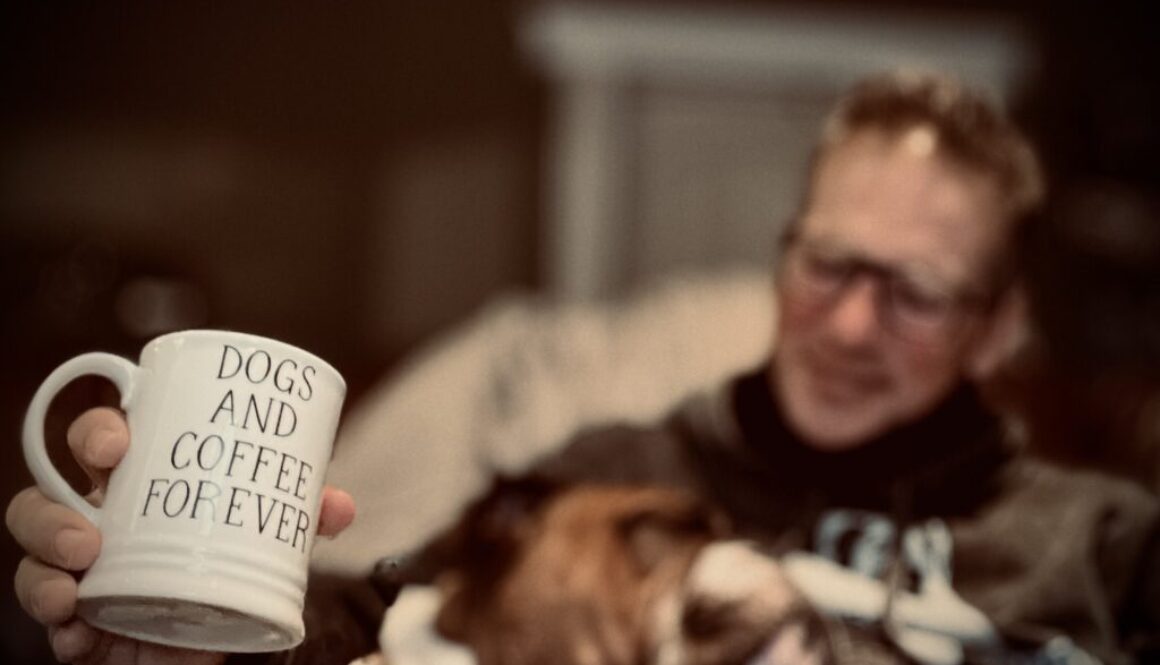

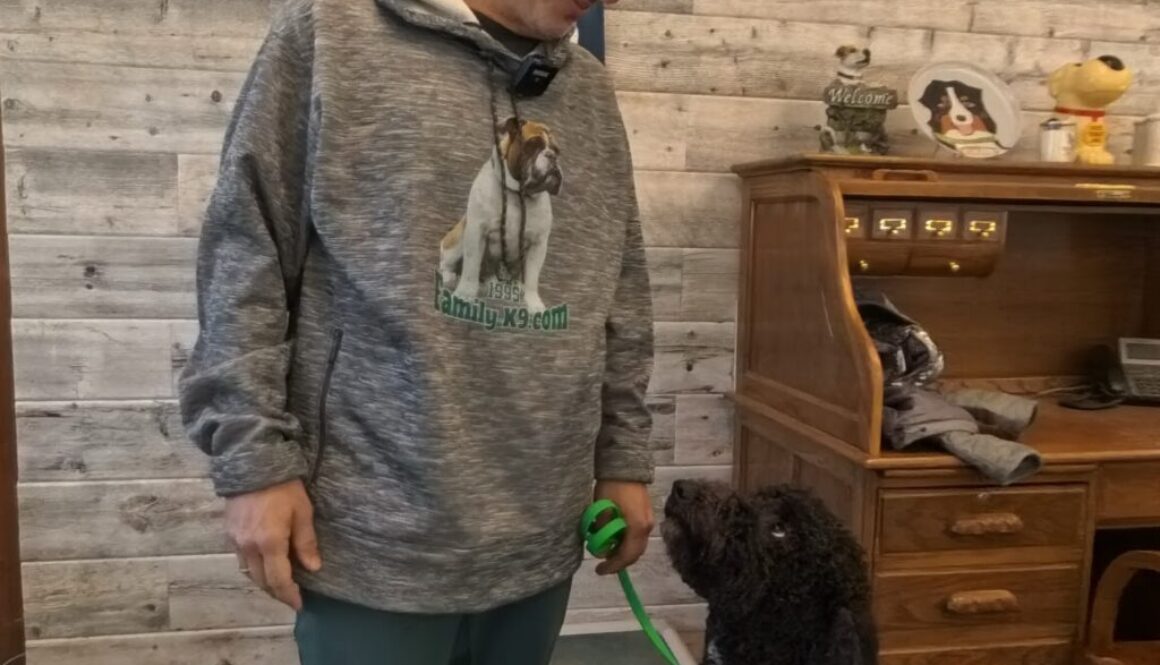

Dogs who are reactive are so unbelievably common these days – it seems like every dog (or just about) has some form of reactivity. Owners of reactive dogs alongside their pets suffer a less than stellar quality of life. Limited outings, limited times fo day, limited lives in short. All in order to avoid triggers that send their dogs into a frenzy of reactions.
Many owners resort to using avoidance, medicating their dogs and accepting that this is as good as it gets.
The above need not be true and training can greatly improve the quality of life for both owner and dog.
Julie and her dogs live in Downtown Montreal. Busy streets, lots of dogs and action to be faced in each and every walk.
She enrolled Molly in Family K9 Dog Training’s Board and Train Program hoping for help.
People asked her how training her dog off island in a remote place would translate to real results in her own area; her neighbourhood, streets and environment. Many flat out claimed it wouldn’t work.
I patiently explained to her how it would and showed Julie how once the training was completed. I coached her through the steps and gave her a playoff how to approach the training including walking by a neighbours home where Molly would previously “lose it” even if the neighbour’s dog wasn’t outside.
I put up a video on YouTube showing how much progress Julie’s dog Molly made in just 2 days. We just kept plugging along and doing our thing – I know the recipe for dogs like this and we will be fine long before she is to return to Julie and have our transfer lesson.
Along the way I had several other reactive dogs in for training including Leo – a French Bulldog, Hannibal a Briard and several others. I routinely bring my in kennel dogs into lessons with clients and their dogs to accompany me – this serves as an additional distraction and gives my in kennel dogs some extra practice.
I even handed Molly to a complete stranger who was in for a (you guessed it!) reactive dog consult and Molly behaviour was identical with me or the stranger handling her. The dog with this client has been prescribed medication by her veterinarian (Prozac) which isn’t working and then the vet wanted to add Gabapentin to the list to help calm the dog – yet in our consult you can see the dog go from highly reactive to calm and ignoring Molly in what essentially took 5 minutes with the right approach – no medication required.
My Dog Trainer Taught Me How to Heal
Written By Julie Matlin
On January 31, 2024, my husband, Dan, died from an opioid overdose. He left me with two teenage children, a seven-year-old dog named Zoe, and a three-year-old monster named Molly.
To be fair, Molly isn’t really a monster. She’s a good dog, full of love, but highly leash reactive. She was a Covid puppy, so obedience school was out of the question. We did the best we could at the time, but it’s hard to socialize a dog when it’s not allowed near other dogs.
Dan and I were together for over 27 years. We had, what I thought, was a near-perfect marriage. He was a successful CTO, we owned our own house, raised two beautiful children, and we were crazily attracted to each other. I had no clue he was an addict.
Sure, there were moments over the years that made me raise my eyebrows. I had caught him in a couple of lies. There were those handful of times he didn’t make it home until morning. He couldn’t hold on to a dollar to save his life. But spread these things out over the course of a marriage, toss in his ability to masterfully minimize and deflect, and I learned to brush them off. Until March 2023, when he spiralled out of control and I had no choice but to face the facts before me.
When I asked him to leave, it was for our safety—mine and the kids. I couldn’t risk having him around. He was running with a dangerous crowd. The drugs were making him erratic. But once he was gone, I was scared. How was I going to manage alone? My mental health had long been shaky and I wasn’t convinced I was strong enough to pull this off. He gave us no financial support and I had left the workforce close to a decade ago. But I put on a brave face, got myself a job, and moved forward.
The only one who seemed to understand how scared I was, how anxious, was Molly. Already a handful on walks, her reactivity spiked tenfold. Every dog, car, bicycle, bus, skateboard, and sometimes even human, set her into a frenzy. Every walk ended in me crying.
I contacted Sean, a local trainer who came highly recommended. Sean was great, and we met several times. He showed me how to handle her and gave me all the tools I needed to succeed. But as soon as I stopped our lessons, Molly and I backslid in a spectacular way. I didn’t have the emotional or physical capacity to do the hard work. Much like Molly, I was going through my own trauma and I was exhausted. So I stopped walking her, letting her play in the backyard while I tried to give myself some grace and rest. This also backfired, as the less she was walked, the more intense she became.
A year went by and I knew things had to change. Around this time, my friend Stacie started coming in from Ontario on a regular basis to stay with me. She would listen to me ruminate about Dan, helped me pack up all his stuff, and insisted on taking long walks. On one such walk, she watched me trying to handle Molly and said, “This dog needs to be trained.”
“It’s not about training,” I insisted. “She’s reactive. She’s scared. I don’t know how to get her to focus on me instead of everything around her.”
“Get a trainer,” she said.
“I tried that. It worked for a while, but I just can’t follow through. I need someone to break this cycle for me.”
Stacie had an acquaintance who had sent their dog away for training. A few weeks, a few thousand dollars, and they were presented with a changed dog. I laughed at the idea, it was the last thing I could afford. But the more I thought about it, the more the idea appealed to me. It was a lot of money, but it could be life-changing.
I searched online, remembering Nick, the trainer who helped us with our first dog, Kato, almost thirty years ago. He has a company in Vaudreuil, about 30 minutes from the city, where he offers a board and train program. It meant giving up Molly for three weeks and delaying my retirement for another year to afford it, but once the idea was in my head, I couldn’t let it go. I can buy myself some peace. Didn’t I deserve that?
I drove up to the kennel for a consultation. I was so confident I’d leave her there that I brought all her food and medication with me. I worried the whole ride up that Molly is such a sweet dog, Nick wouldn’t see the issue. The kennel is remote—not in the middle of the city with a dog on every corner. What if he told me I was crazy and sent me home?
About five minutes after I brought Molly in, another woman came in to board her dog. Molly went nuts. Barking, straining at the leash, paws skating on the floor, yet Nick got her under control before I could say, “SEE?” For the first time in what felt like forever, I exhaled.
“Tell me about her,” Nick said.
I rattled off a long, rambling, barely coherent list of all the mistakes I’d made, all the ways I’d done the dog wrong, and throwing my feelings of guilt and inadequacy in for good measure. Nick let me go for about two minutes, then held up his hand.
“Stop,” he said. “All of that is in the past. All that matters now is what you do moving forward.”
I stopped, blinked, and swallowed hard.
“I cry easily,” I said, as the tears started. I knew he was talking about the dog, but that simple sentence somehow applied to my entire life. Every red flag I’d ignored with Daniel. Every time I walked on eggshells to avoid upsetting him. Every time I settled for even less than the bare minimum. All of that is in the past. All that matters now is what you do moving forward.
I left Molly in his care, returned home, and the strangest thing happened. All the tension and stress I’d been feeling evaporated. There were no walks to dread. Zoe and I would go out and have a pleasant stroll through the neighbourhood. I regained my love of spending time outdoors with my dog. It became a pleasure again, rather than a chore.
Nick kept me updated on a regular basis, sending emails and posting video to his YouTube channel. I was stunned at the progress she was making and how quickly it was happening. Three weeks later, I drove to the kennel with a little apprehension and a lot of hope.
“You need to ignore her when I bring her out. Watch what I do. What happens in the next few minutes is important.” Nick left me in the waiting area while he went to retrieve Molly. I waited for the moment she’d jump on me and pee all over the floor. She was a dog with big emotions, he’d warned me—something I already knew. But when the came back, even though she was clearly excited beyond measure, he was able to contain her. A simple correction on the leash and she remained by his side. As soon as she sat, I went over and pet her, feeling a rush of love for her that made me realize no matter how difficult she’d been, no matter what the road ahead held, I loved this dog.
We went outside into the frigid December air and he showed me how to handle her. We did drills with me reinforcing her heel, back and forth, in a perfect square, each time giving her the command and implementing small corrections. She fell into place beside me and it was glorious.
“I know she’s a good dog, I know she wants to please—” I started. He shook his head.
“She doesn’t want to please. That’s not how a dog works. Dogs who do things predictably and reliably find value in the behaviour. That value is either something positive gained or something unpleasant avoided.”
Nick was talking about dogs, but I thought of Daniel. I know I need to stop, he’d said to me at one point. But without the ability to retreat into a drug haze, I can’t face what I’ve done. The drugs rewarded him, allowed him to avoid the difficult feelings. Until they didn’t. His whole life had been about either gaining positive reinforcement or avoiding unpleasant situations. He didn’t know how to handle failure, how to be accountable for his actions. The drugs gave him an out.
Since his death, I’d been doing everything in my power to show my kids (and myself) that there was a different way. Through therapy, grief groups, EMDR sessions, positive coping mechanisms, I was facing our trauma head on. That’s what Nick was talking about—finding a better way to do things.
I peppered him with questions, asking about her motivation, inventing possible scenarios and, once again, rehashing all the mistakes I’d made in the past.
“Stop,” he said. “Just stop ruminating. You need to get out of your head and just deal with the situation before you.”
I laughed. He was right. In one two-hour transfer lesson, he was showing me in concrete terms what I’d been grappling with in therapy for over a year: stop focusing on the past and deal with the present. It doesn’t matter what happened before. All that matters is how I handle things going forward.
“I’m here for you,” he said, handing over Molly’s leash. “If you need a refresher, if things start to backslide, just call me. We’ll book another session and work it out.”
I thanked him profusely, looked down at my dog and smiled at her. We’re going to be okay. Both of us.
Julie Matlin Freelance writer with work appearing in @nytimes @washingtonpost, @todaysparent, @jdforward, @globeandmail, @chatelainemag, and others. (taken from Julie’s insta page)
The above article was submitted to the New York Times Modern Love Column.
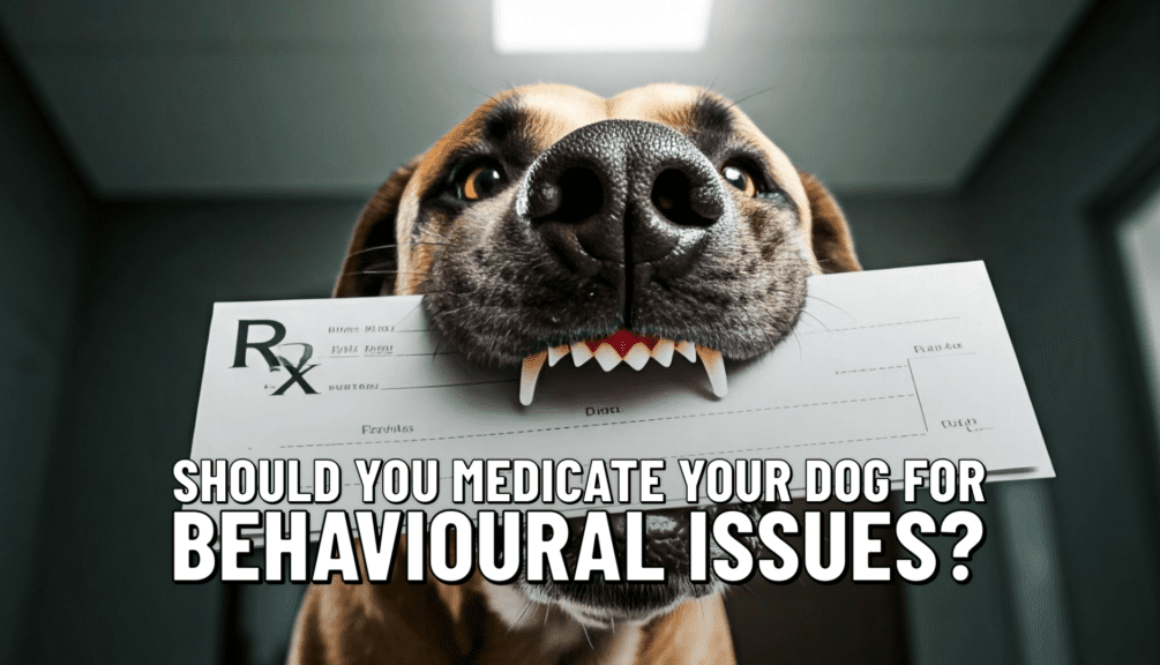
As a professional dog trainer with over 30 years experience I deal with owners of dogs and their pets with all sorts of behavioural issues.
I am often faced with “untrainable dogs” who have gone through all the popular/fad trainers with limited success and are often medicated to help deal with their issues.
The owners believe that medication is necessary since they tried training and it “didn’t work”.
This is simple – behavioural problems in dogs are there for one of, or a combination of the following reasons:
In all but the most severe cases a plan of action that involves above all behavioural modification is required. Dogs are pattern based creatures – you can probably off the top of your head talk at length about how predictable your dog is for certain activities such as walks, meals, play sessions, going to the park etc … We need to get to the root cause of where the problem comes from and change the pattern.
It is critical to work with a professional who can guide you expertly through the necessary steps to help modify your dog’s behaviour. In my experience I have worked with dogs from across Canada and the US with all sorts of behavioural issues ranging from mild to severe and have found many of these cases equally challenging as well highly gratifying.

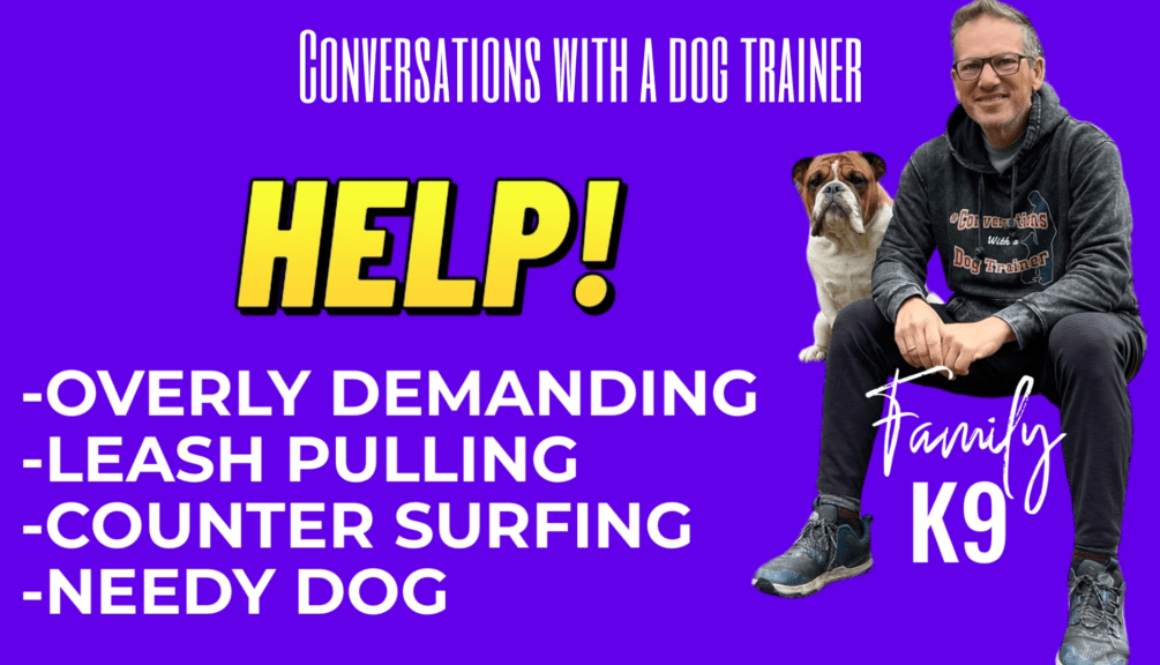
Needy dogs exist for several reasons:
Needy dogs almost always have something in common:
An owner who gives constant attention – wether willingly or as a result of being frustrated with the dog and thinking that they will get the dog to stop what they are doing or change their behaviour through attention, reward or correction.
Once the dog learns that the owner is like a broken slot machine – the dog will keep pulling on th eleven and hitting paydirt time and again.
In order for things to change – the dog needs to be trained and the owner needs to better understand their role as well as their dog’s mind and reset how they are living with the dog.
Dogs are opportunists. Leave something out – leave an untrained dog unattended et voila! It starts young – not wanting to use a crate, or maybe taking a chance leaving the dog alone in a room for a minute while you go to another part of the house. Or maybe you are adopting an older dog who has already learned this.
Once a dog learns that they can shop @ home – well this meats Amazon Prime. it isn’t next day delivery – it is same day delivery- same minute.
a combination of crate training, boundary training, leave it, and keeping things away so the behaviour does not get further reinforced helps Depending o the dog, the dog’s level of drive, it’s history – varying degrees of all of the above are needed.
Attention given at the wrong time equals broken telephone. It sends a faulty message to your dog. In terms of neediness – the dog who is being looked at, shushed or touched while whining or pushing for attention is being paid for the behaviour.
What do you think happens to a dog when it finds a reward tied to a behaviour?
In order to help a dog not become pushy and demanding – or help one who already is – you need to audit your actions to make sure there is minimal to no incorrect reinforcement going on.
That same attention affection and energy we just talked about can be used here to great success. Show your dog how much you enjoy what they are doing when they work for you. Motive your dog like I do with Blue in the video to change your dog’s attitude towards working with you from the equivalent of a dog who hates their job to a dog who is a full partner.

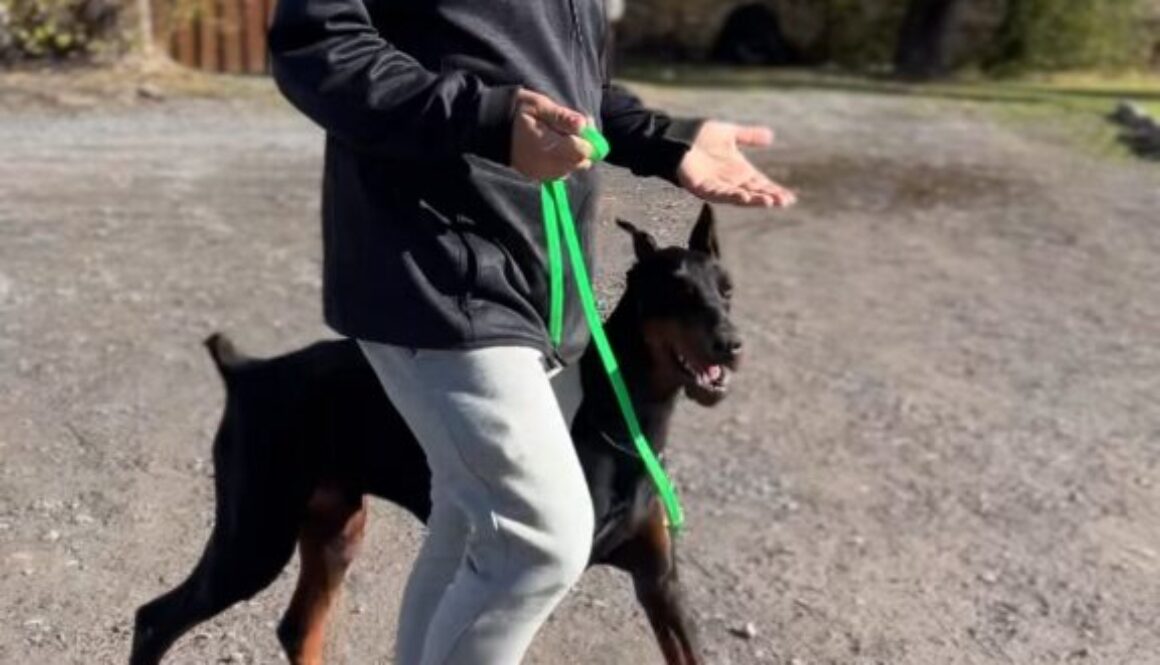
Dogs pull on leash for a multitude of reasons:
There are so many gimmicks out there in dog training.
Bungee leashes, head, halters, different types of collars, magical, harnesses, etc., etc. etc..
All of these things are for people who don’t understand the core principles of dog behaviour and training and the companies know this so they market to the uninformed.
Nothing will replace the value and benefit of teaching your dog to focus on you.
Reread that statement it is an important one.
Nothing will replace the value and benefit of teaching your dog to focus on you.
Take a look at these videos for examples.
This large and powerful Doberman used to drag his owner everywhere at warp speed, pulling, barking, lunging and jumping all over.
After proper obedience training, he is now a very focussed and willing training partner and just such a beautiful and happy dog to watch in action.
Teaching a dog to focus involves a skill set on the dog trainers part.
It involves fundamentals of dog training, such as understanding when and how to reinforce both what you want and do not want and how to exaggerate the positive so that eventually the dog wants what we want and our goals are in alignment.
Watch the dog in the videos and watch how he not only works and follows direction, but does so with a bounce in his step and with joy.
The movement and attitude he displays signifies a joy in his work that goes well above and beyond simply “doing his job”.
Reactive Dogs by definition are focused and reacting to stimuli in their environment. If we want to help improve a reactive dogs behavior, we have to shift their focus from whatever has the magnetic pull to the core of your dog and transfer that onto us so that the dog can follow our lead and our direction.
The on off switch is something I focus on with my clients day in and day out.
The more clarity a dog has with this aspect of training the easier it is to communicate with the dog, to guide, steer and direct our training partner.
Watch the second video to understand this better. This dog knows very clearly when we are healing and he is very focussed and then when I release him, he bounces around like a baby deer.
He is very silly and playful, which brings joy to work and I know how to exaggerate this for him. I love my dogs to be playful and joyful in training. It gives them purpose in their work.
This is also very useful to give the enjoyable moments and training, but it builds the dogs focus in anticipation for the next release.
Furthermore, it reinforces our on switch because the faster heat turns on the faster we get to work the sooner we can then have another release and play and then gradually we build the time to our next release.
By releasing him repeatedly and allowing him these little micro explosions the dog is also learning to control himself when he is excited and adrenalized, which goes along way towards helping us navigate through big distractions out in the real world.

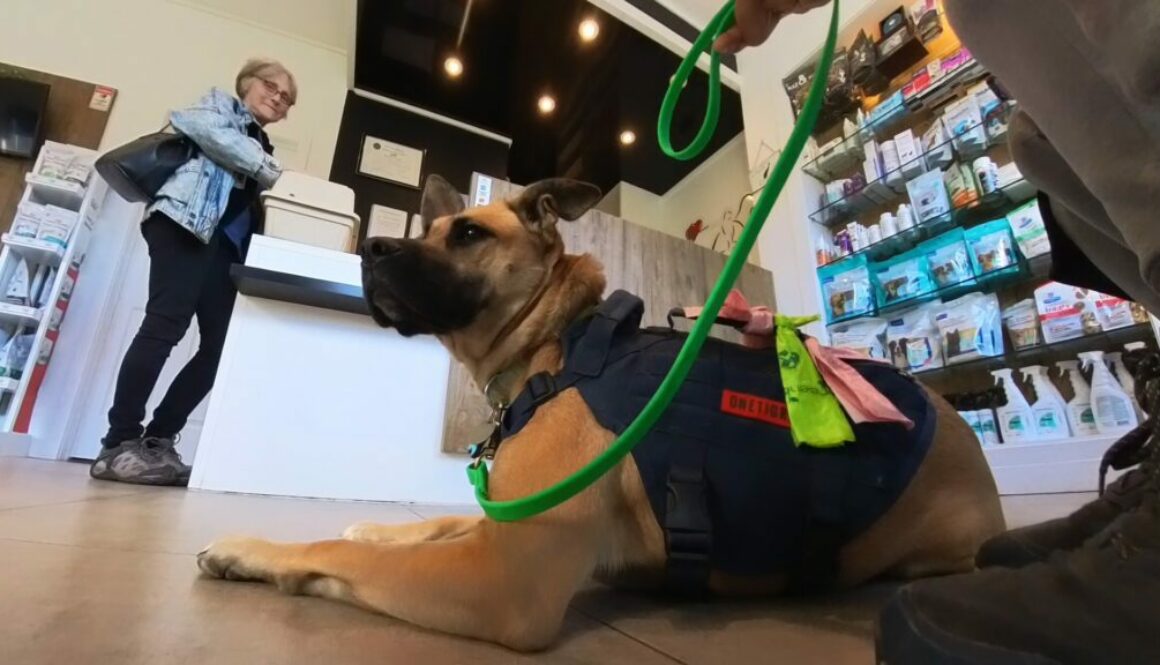
Starting to crate train a puppy is as simple as feeding them in their crate.
Once your puppy is used to eating in the crate, you can begin leaving your puppy in for short periods of time.
Make sure your puppy has plenty of time to exercise and go potty before putting them in so that you do not add any additional stress or provoke accidents in the crate.
If you’re starting with an older dog, the dog may have already learned that barking, whining or acting up in the crate, may provide the dog with opportunity to get out.
It’s important to condition the dog to the crate and to use an approach that teaches the dog to be calm. Using positive reinforcement when the dog is calm and quiet in the crate so that the dog realizes that it is a temporary thing and one that brings reward if they are calm and quiet
Take a look at Skyla who panicked in her crate when her owner tried to crate train her at home.
Look at how effortlessly she goes in on command despite the fact that her brother Dexter and I are having a great time & carrying on right in front of her.
She is able to follow commands, go into her crate up upon request and remain in there calmly until we let her out.
She is able to follow commands, go into her, crate upon request and remain in there calmly until we let her out.
Teaching a dog to remain calm and follow direction will always get you much further than any form of physical restraint be it a leash/harness/collar or door of a crate.
Dog training should be about communication with the dog and teaching the dog to think and follow direction.
And dealing with only the physical aspect of the dog. Ideally, we are communicating with the dog and teaching the dog to think and follow direction.
This creates a favourable outcome and teaches the dog to be calm and focussed as you can see.

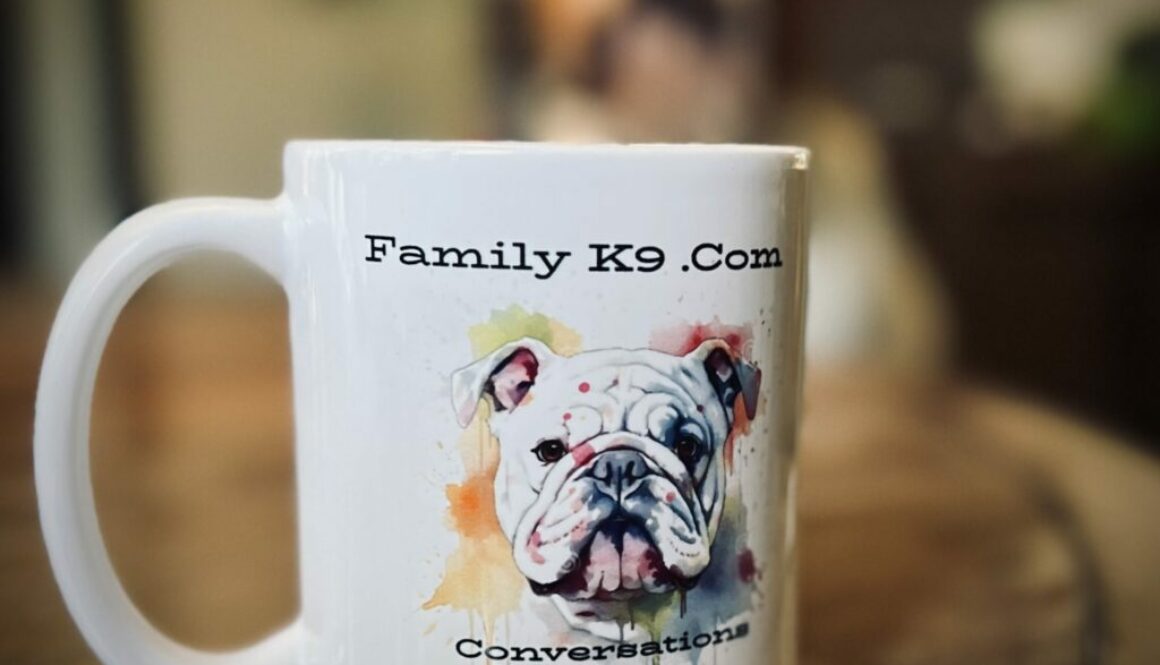
When someone comes to me for help with their dogs one of the first things I have to help the owner identify is that in addition to teaching skills to a dog, we also need to address lifestyle. That means getting the owner to change habits that feed unwanted behaviour and creates an unhealthy life for the dogs and their humans. In some cases it also involves how the owner perceives the dog. Perception can become reality – for better or worse.
If we treat our dogs like they are “broken or damaged“ because of their history, then we doom them to be stuck in the same place for the rest of their lives.
In fact, they will be even worse off as time goes forward because things will deteriorate as the years go on.
Our dogs need us to be informed, intelligent and purposeful. We must aid them to be stronger through proper knowledge, training and guidance.
To assume that every hardship a dog encounters is because the dog is a rescue dog, or has had a rough past in life, is to doom the dog to a future of no hope. Such labels are limiting, soul-sucking, joy robbing death sentences.
Neither love nor pity will train a dog & neither will help a dog’s situation improve.
Let’s all be strong for our dogs so that they can be strong in the image we create of them.
Believe in your dog’s resilience and you’ll be amazed at where you’ll travel to together.
Follow this link to a YouTube video on things rescue dogs wish you knew in order to help them.
#Believe #Dog #strong #DogTraining #DogTrainer #MontrealDogTrainer
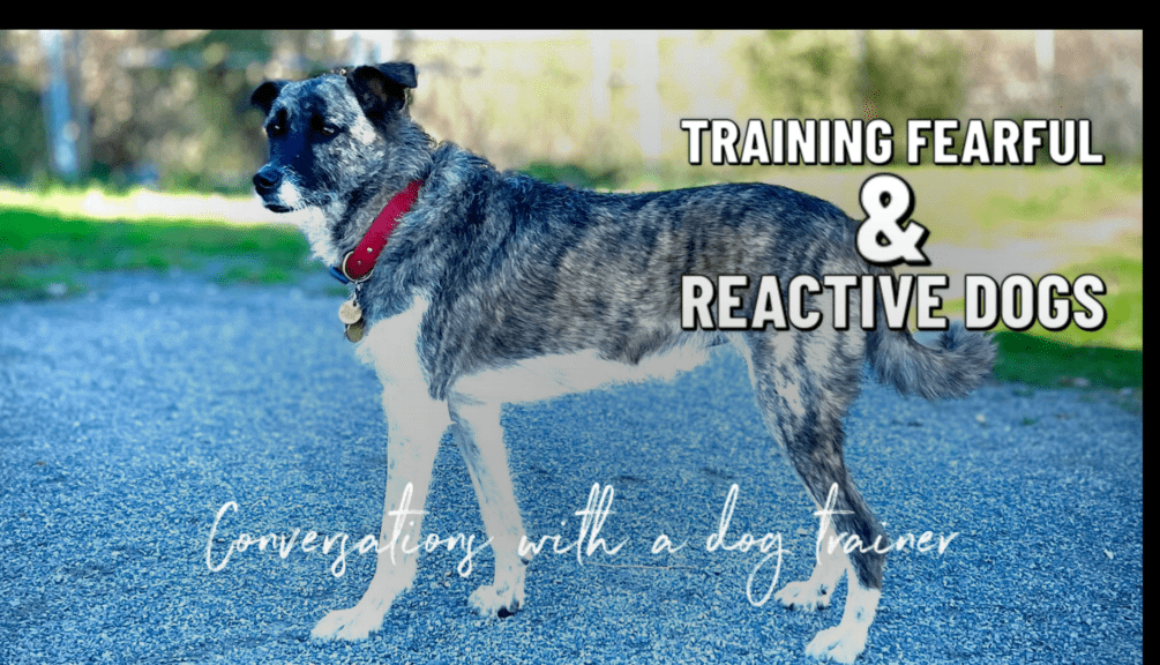
In order to help a fearful & reactive dog you need to understand what motivates them to behave the way they do In a word; survival.
The dog sees threats where they don’t exist and is acting upon them because in the dog’s mind this is what is required to stay safe
The fearful dog wants to survive the day. Teach them a new way to accomplish this and you will alleviate a ton fo stress from your dog’s day to day existence and make your life easier in the process.
We are all hard wired to survive and food is not as compelling a motivator as survival. I have nothing against using food in training and do so in some instances – but it has to be the right tool for the right dog at the right time.
It isn’t likely that your dog is “beyond help”. I regularly work with older dogs with long, complicated histories or multiple previous trainers, medications and the owners feel like they have exhausted every option available to no avail. They just needed to find a better approach.

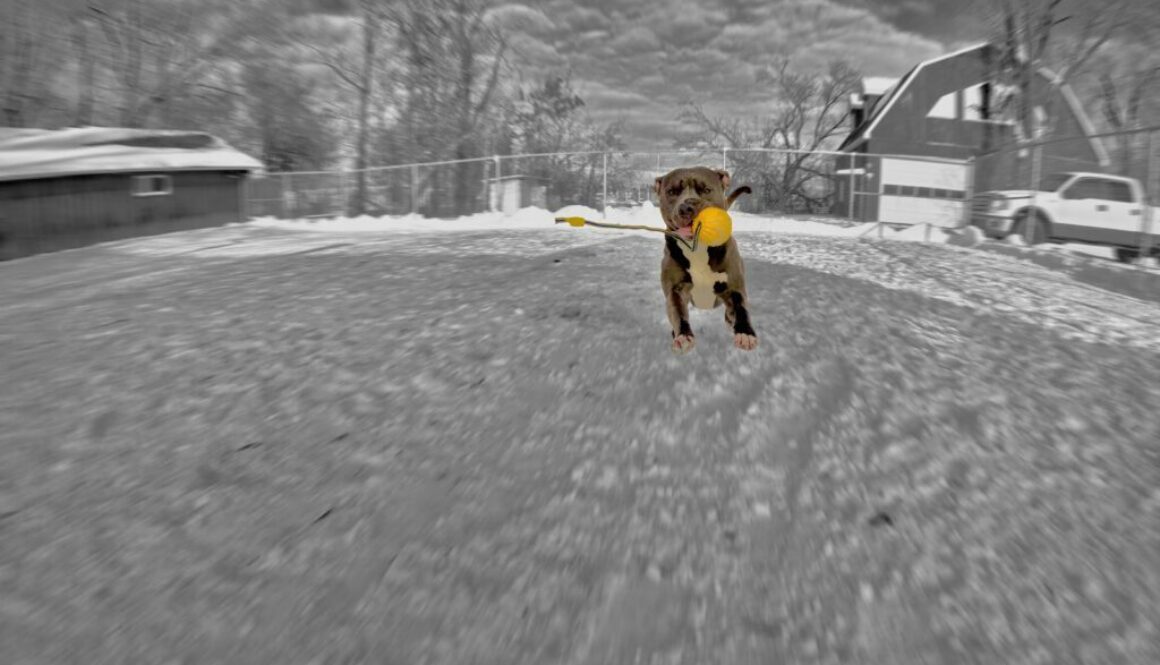
Dogs with OCD behaviour can pose very challenging problem for both themselves and their humans.
Dogs can present a wide range fo OCD behaviour such as :
Odin and his people came out for a consultation towards the end of 2023 and then enrolled him in Family K9 Dog Training’s Board and Train Program.
What was evident to me from our consult is that Odin was a joyful, engaging dog who wanted to connect with me (or anyone really!) and had a lot of drive. This is typical of many OCD dog’s. Drive. It is a living organism and unless you’ve lived with a highly driven dog you just can’t imagine how powerful it is.
Odin had a serious problem chasing light, reflections of light and shadows.
This all started when his owners would play with him as a youngster with a laser pointer.
What started as a fun pastime quickly turned into an obsession and spiralled out of control.
The strategy for many OCD dogs is actually very simple.
Replace the unhealthy with the healthy.
It’s a fool errand to get caught up in trying to simply stop a dog from doing something it is obsessed with. This is exactly like playing whack-a-mole with your dog 24/7.
In some instances medication can be helpful, but in my experience, it is largely overprescribed, overused, and done so before we have exhausted, behavioural intervention options.
The first action we should take is to evaluate the dogs behavior, assess the level (if any) of training and create a plan of action for such a dog that includes training, a healthy outlet for the dogs drive, and lots of mental and physical stimulation to give all that energy, a healthy direction to flow into.
for ore information on OCD check out the AKC website

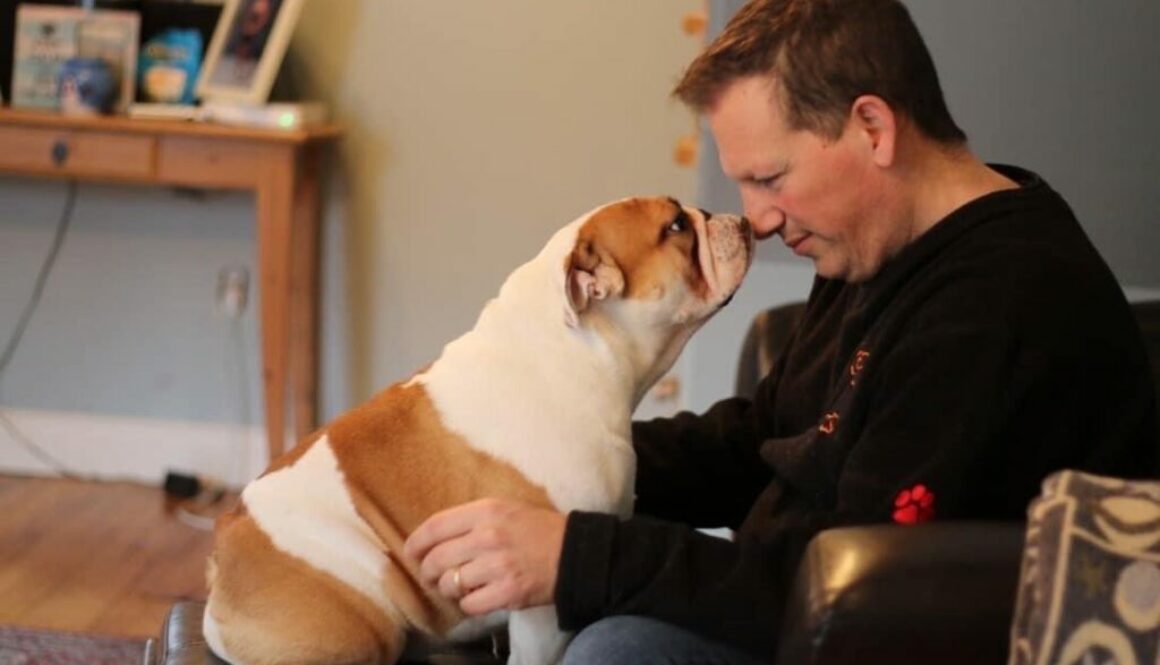
The advice you follow will dictate the outcome of your dogs behaviour and ultimately guide the path you and your dog are on for years to come.
I’m working with an array of dogs & their owners right now, who have gone to other trainers before me who have suggested or employed the most bizarre, useless and in some cases harmful “dog training” leaving both the dogs and owners confused and frustrated.
“if you don’t like what your dog is doing, ignore it”
“ if you don’t like your dog nipping or jumping up, poke him in the ribs”
“if he doesn’t listen, put him in his cage for time time out”
“If he doesn’t listen, don’t feed him”
“your dog is anxious and needs Prozac“
“your dog is hopeless. There’s nothing to be done“
“this dog is untrainable“
“Your dog is stubborn and like a dumb blonde in high heels (I actually have video of this dog on my site after I trained him and he is a lovely dog who is very trainable and his owners were thrilled to find out how wrong their original trainer was!)
This is a short and sanitized version of what I hear on a regular basis.
Every single case the dogs were trainable, in most cases, very trainable, and a lot of fun to work with.
The owners were unfortunately duped into believing what the trainers were telling them based on the trainers ability to “sell“. Either through Credentials (certifications and memberships), experience “… I’ve been doing this for X years“ and in some cases the hard sell (think used car dealership).
At the end of the day, dog training should provide results. Real results that improve the quality of life for dog and owner.
Results take time and require knowledge, energy and effort, patient and consistency.
Results should show themselves when things are being done properly. Is after several weeks or even months of working with a trainer and your dog, you are not seeing an improvement or in some cases things are going from bad to worse this is a clear sign that things are not working.
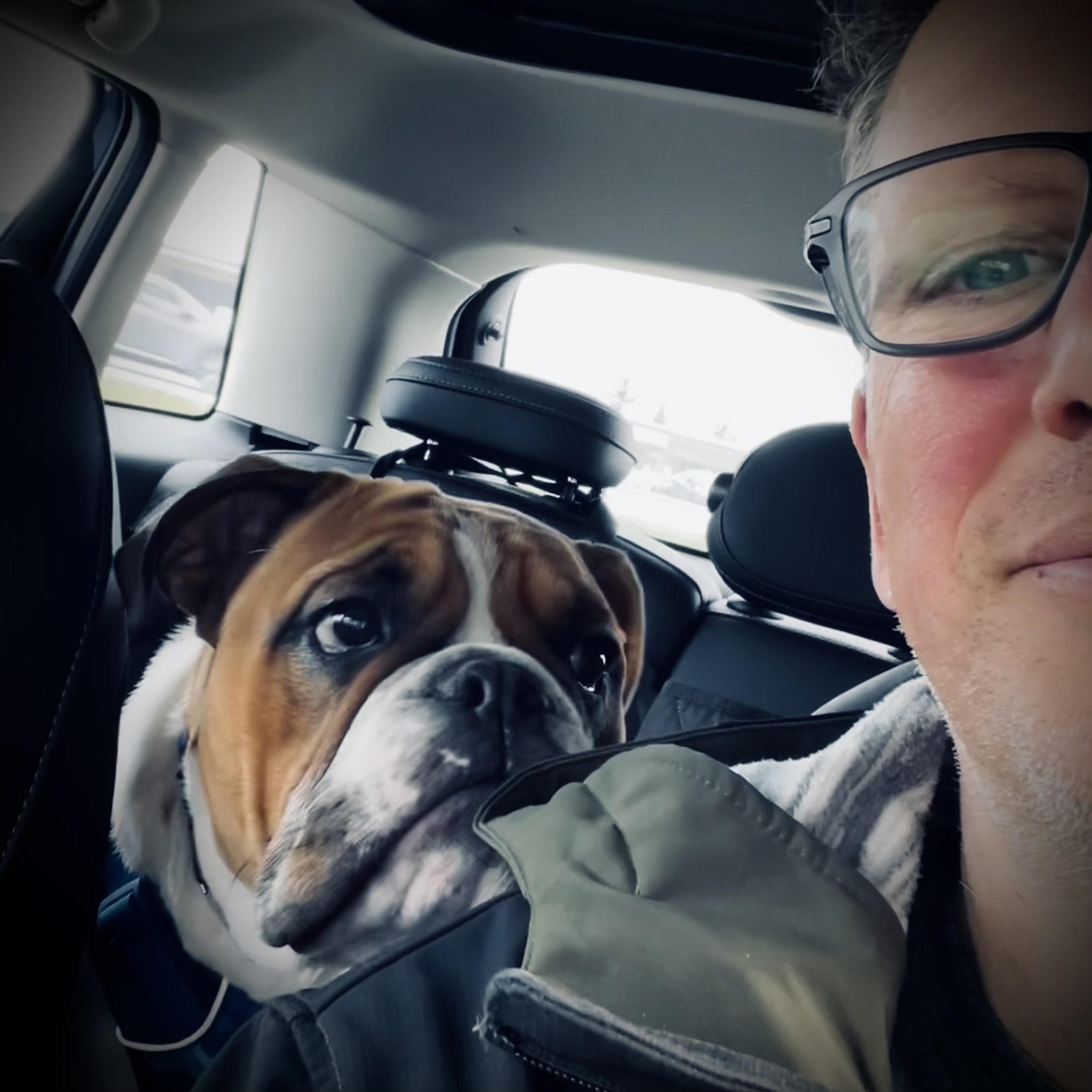
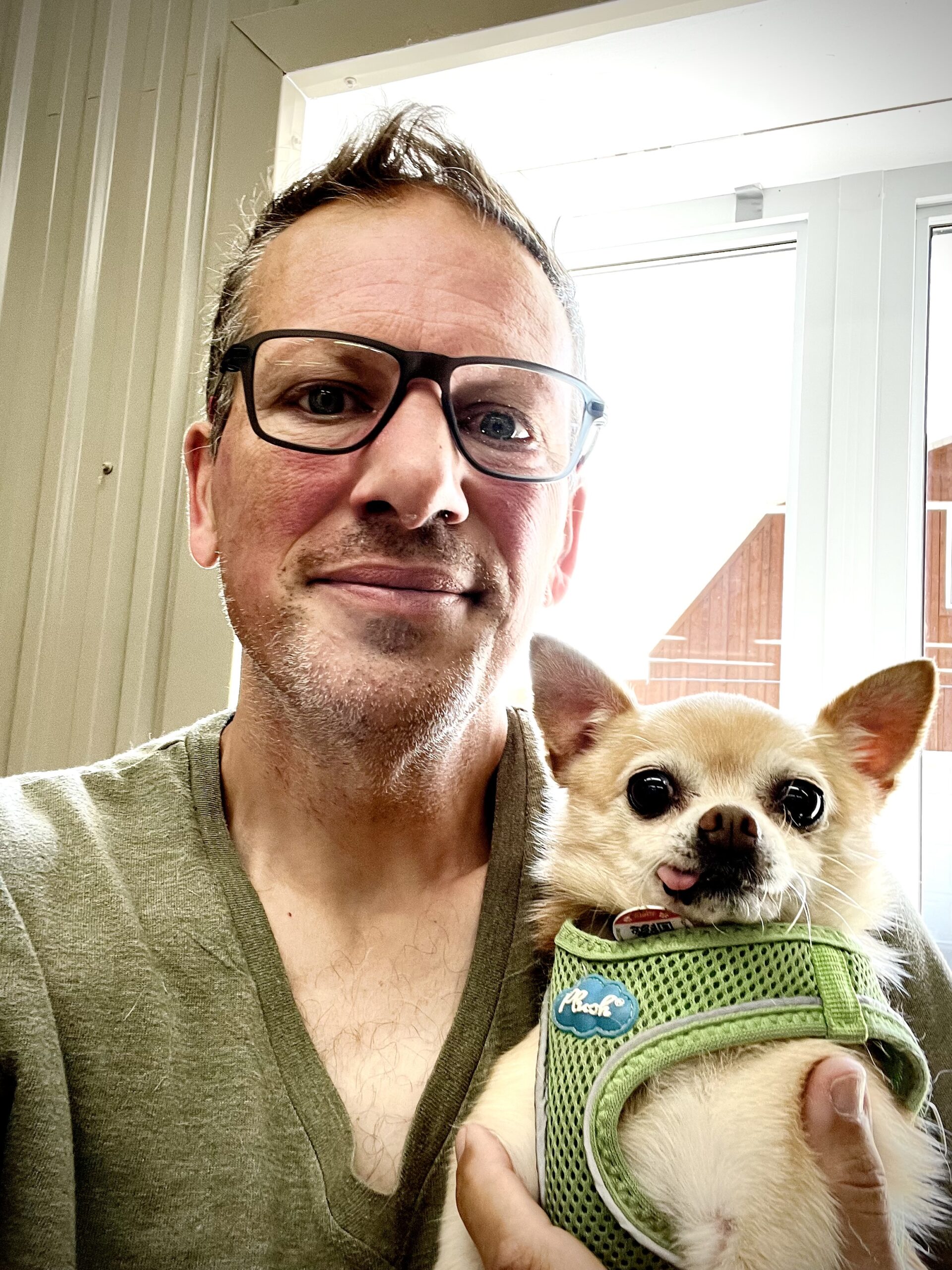


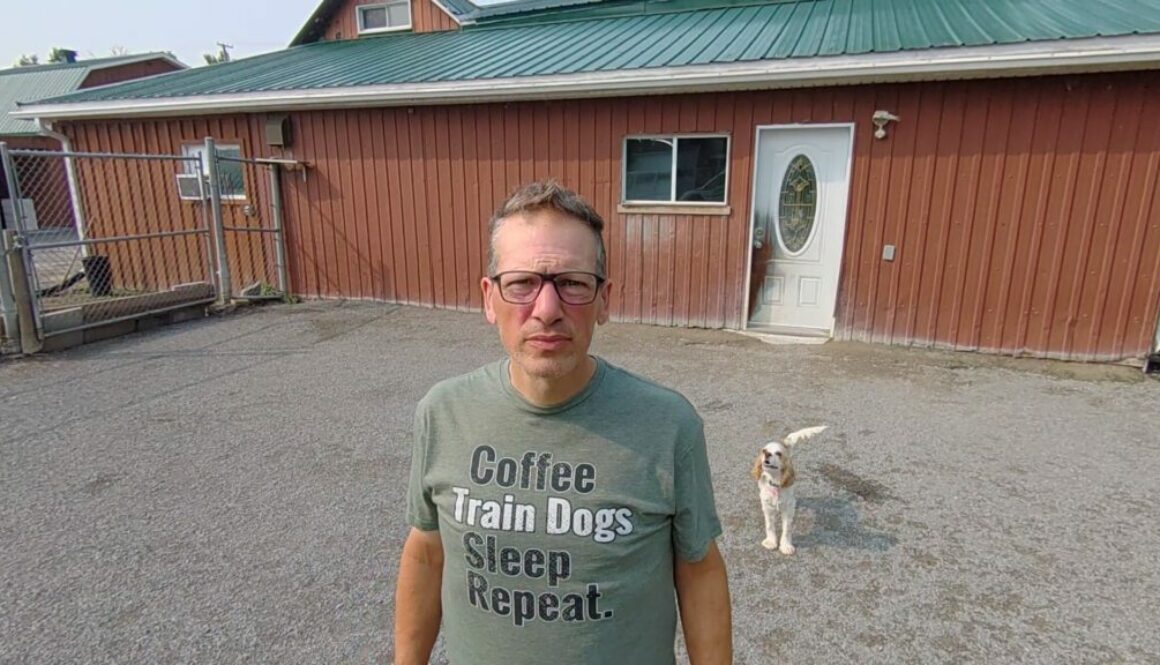
Hadley is a one-year-old spaniel who is extremely anxious and cannot relax her mind.
Her owners contacted me for help because she barks nonstop outside on a walk, around the house, whines continuously and show a general restlessness and unease despite all of her owners efforts.
‘from Hadley’s owner’s original email:
”When she is inside, she is constantly barking. It gets worse when she sees birds, people, dogs (anything that moves really) from the window. I know she barks for attention, and we have tried to correct this but it has not worked.
“On walks, she lunges at cars, barks at everything and seems very aggressive towards other dogs. “
“Focusing on us in different environments. She rarely pays any attention to us when we are outside. Constantly pulling on lead, she looks like a sled dog trying to drag us along. When we stop walking and tell her to sit, she sits for a second then is back up and pulling/whining. “
“Aggressive” towards other people and dogs. If someone comes over to our house, she growls and barks, then lunges and backs off. She has never bitten anyone. The barking can last for five minutes, but sometimes it lasts for over an hour. The moment someone tries to pet her once she is calm, it starts up again. With other dogs however, they could be out of her sight and she will still be barking and lunging. Even just hearing another dog bark, she goes crazy. “
“Her vet has told us that she is anxious and has prescribed Trazodone, but only for when we know a “stressful” event is coming up.”
Take a look at Hadley in these videos to give you an idea of her progress!
”Holy moly!! She’s like a completely different dog! We are so happy she is doing well and I can’t believe how quiet she was! We have tried bringing her into Chico and mondou before, and even without any dogs or staff around it did not go well. I’m beyond happy she is calming down. I don’t know what to say! “


Tug-of-war? Why you should play it with your dog.
Dogs love to play and most dogs love to play in a rough and physical way.
Dogs also love to use their mouths. By showing them that they can use their mouths and satisfy their need to bite, pull and thrash around with their owners it helps the dog live a much more satisfied lifestyle. It also helps the dogs spend energy and is a very bonding experience for the dog and owner.
If your dog is a resource garter or displays any type of possessiveness or aggression to its family, it is not advisable to play tug as you will very likely create a bigger problem and potentially put yourself in harms way.
Of course, if the dog is physically incapable, or has health related issues that prevent it from playing tug this is also another instance where we need to be tuned into.
Assuming that the dog has no behavioural issues and that you have a healthy relationship with your dog tug-of-war will definitely not create an aggressive dog.
If anything, it will teach the dog that there is a “time and place” rough and rowdy behaviour and that is when we initiate play with a toy.
Watch the video clip provided here and take a look at how my bulldog puppy hooligan crashes around like a madman while we were playing tug.
He’s well into it, pushing and pulling and growling and carrying on.
Pay special attention to what he does when I release :


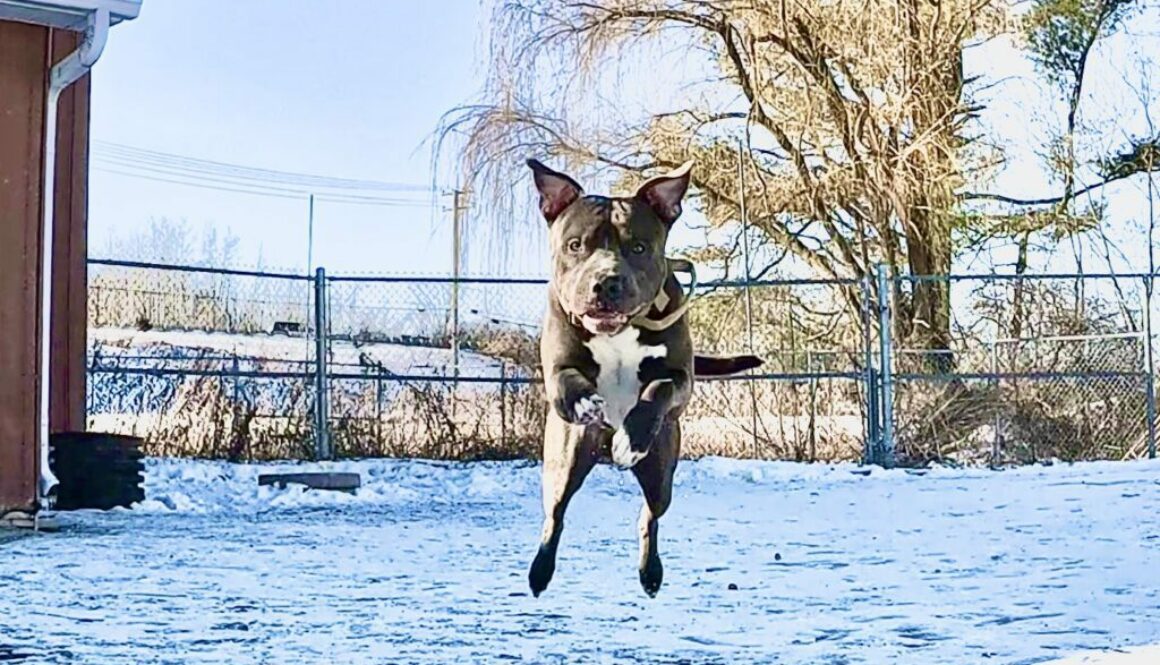
Dog Training is as much science as it is an art. We have so much information about how dogs process information, adapt and learn. We have a better understanding of how a dog’s drives, DNA and early life experience can influence their behaviour. We also need to balance all of this with a keen and observant eye in training and analyzing what we do to help guide our dogs to success. We have to be able to understand our dogs’ feelings and in this particular case Odin’s feeling ran away from him like the bus in the movie Speed. It was full speed, no brakes out of control unhealthy obsession with shadows.
Helping dogs with specific issues like Odin is a joy to partake in. As a professional dog trainer fo 30 + years I love when people bring me challenging dogs. In many cases they bring me dogs who have already seen multiple trainers and yet they have not been able to successfully remediate the problem behaviour.
You can’t simply force an obsessed dog to stop. We have to work on teaching skills, replacing and redirecting the dog’s focus and energy and in essence showing ther dog a new reason to get up in the morning. Very driven dogs of any breed are purpose driven. Their drives must achieve satisfaction or the frustration will bubble over like a full pot of boiling water on top of a burner set to max on the stove top.
Odin’s owners requested a consultation towards the end of last year and then he came in for Family K9 Dog Training’s Board and Train In January of this year. Since he has gone home from training they have followed up on his work and have done very, very well learning how to live with Odin and follow the condors explained to them in our transfer lesson. Everyone is living a much more content and peace filled life now – Humans and Dog enjoying their days together as it should be!

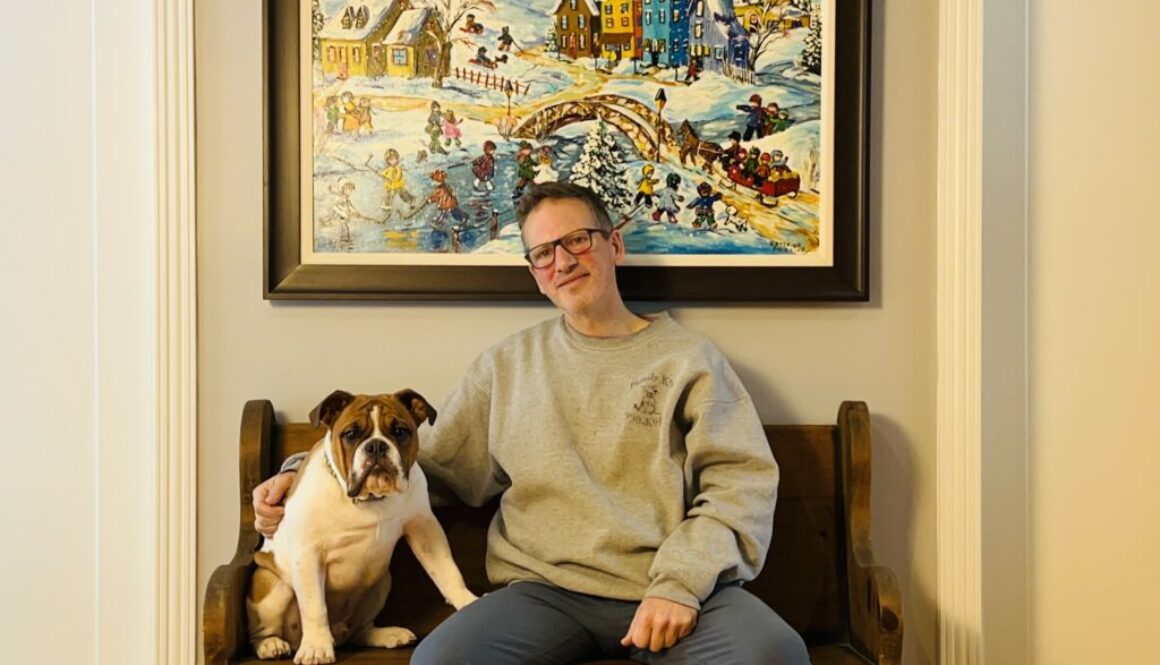
In-kennel dog training is a popular option for those seeking comprehensive and effective training solutions.
In-kennel dog training, also known as board-and-train or residential training, is one fo family K9’s most popular services along with one on one lessons at your home or at the kennel as well.
During the in kennel program, your dog resides at the kennel receiving intensive training tailored to its individual needs.
Not sure if in kennel training is what you want?
Send Family K9 Dog Training an email to discuss the In Kennel training option as well as the possibility of exploring other training options such as one on one private lessons if that is your preference for you and your dog!

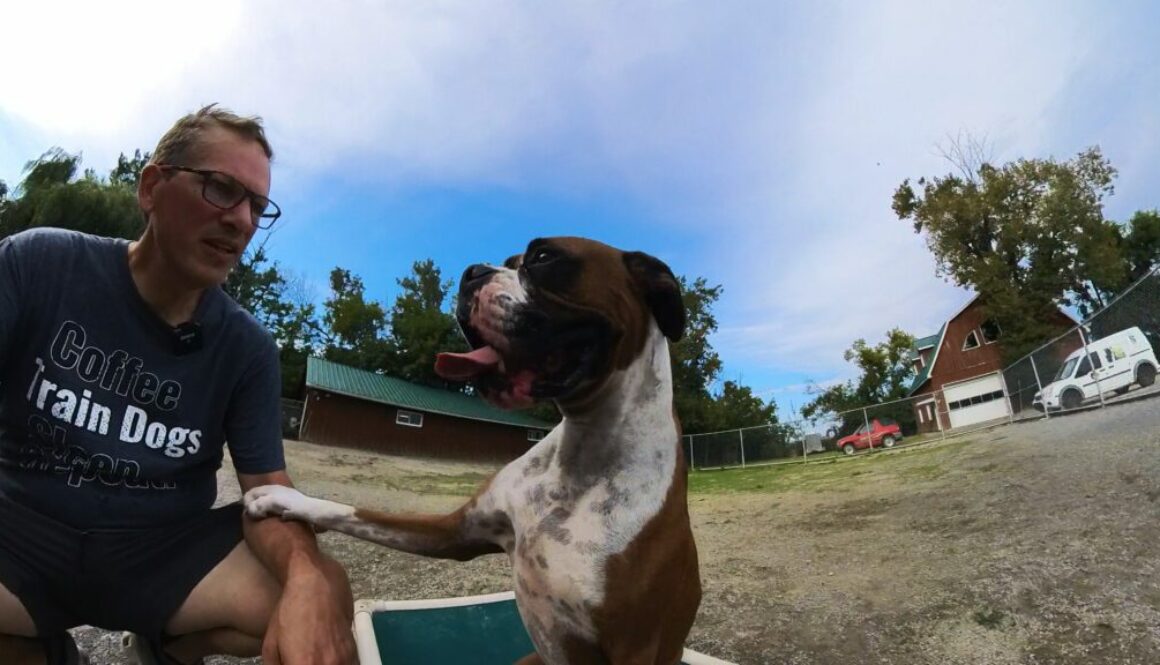
Family K9 Dog Training: Unleashing Harmony for Vaudreuil area dog owners ! 🐾🏡
Attention all Vaudreuil pet parents! If you’re searching for a canine training experience that combines expertise, compassion, and a family-friendly approach, look no further than Family K9 Dog Training. Nestled in the heart of Vaudreuil, this premier dog training service is dedicated to transforming your four-legged family member into the well-mannered companion you’ve always dreamed of.
🌟 The Family K9 Difference:
At Family K9, your dog is not just a student; they’re a valued member of the family. Nick Zevgolis is an experienced trainer of 30 years who bring a wealth of knowledge and a genuine love for dogs. The personalized attention ensures that each dog receives the tailored training they need to thrive.
Recognizing that dogs are an integral part of the family, Family K9 Dog Training emphasizes a family-centric approach. They believe that involving the whole family in the training process creates a stronger bond and a more harmonious living environment.
Whether your furry friend is a rambunctious puppy or a seasoned senior, Family K9 offers comprehensive training programs to meet every need. From basic obedience to advanced skills, each program is designed to address specific behaviors and enhance the overall well-being of your dog.
The training philosophy at Family K9 is rooted in positive reinforcement. This means focusing on rewarding desired behaviors rather than punishing undesirable ones. This approach not only fosters a loving relationship between you and your dog but also makes the learning process enjoyable for your furry friend.
Family K9 understands that dogs need to function in various environments. Training your dog with the right approach will enable you to make the most out of your dog’s good behaviour and take your dog anywhere. The Montérégie region offers many outdoor activités for nature lovers and active people and why wouldn’t we want to include our dogs on hikes, walks, runs, cycling just to name a few? Being able to control and communicate with your dog opens up a world of possibilities and potential for enjoying nice outings in places such as parks and busy streets, allowing your dog to generalize their skills and become a well-behaved companion in any situation.
Conveniently located in the heart of Montérégie, Family K9 Dog Training serves the entire region, from charming communities to picturesque landscapes. Whether you’re in Vaudreuil, Hudson, Rigaud, Saint Lazare or Longueuil, Brossard, or any other part of Montérégie, access to high-quality dog training is just a paw’s reach away.
Ready to embark on a journey of positive transformation with your furry friend? Contact Family K9 Dog Training today and unleash the full potential of your beloved family member.
📞 Phone: (514) 990-5959 (K9K9)
Contact Page:Contact Family K9 via email. Emails are preferred as Nick is in training sessions all day and cannot get to the phone.
🌐 Website: www.familyk9.com
Welcome to a world where harmonious living with your canine companion is not just a goal but a reality! 🐾✨. See the results for yourself in the testimonials from past clients and the videos of Family K9 Dog Training dogs in action!

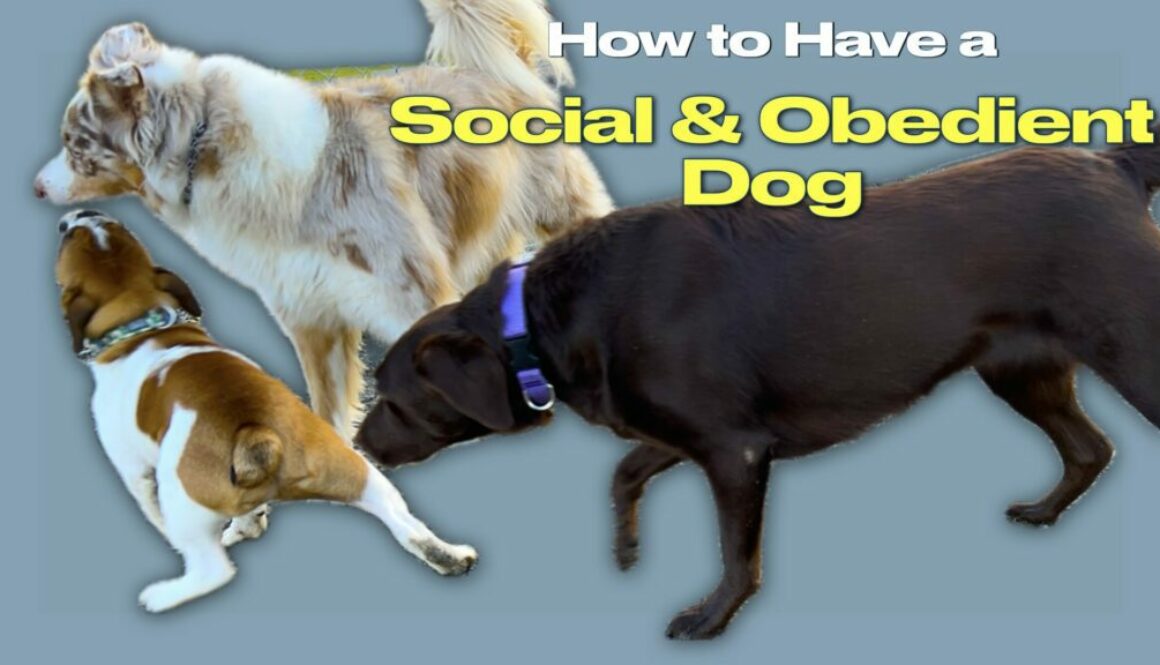
Uncover strategies to enhance your dog’s focus during training sessions. From attention exercises to mental stimulation games, we guide you through cultivating a dog that stays engaged and attentive, making training a joy for both of you. Having a dog that can focus on it’s person when required make all communication with our K9’s much easier.
Beyond Basic Commands: Advanced Obedience Training for Canine Brilliance
Your Dog, Your Companion: Building a Lifelong Bond Through Training
Discover how the training journey strengthens the bond between you and your dog. From puppyhood to adulthood, our guide ensures a lasting connection based on trust, obedience, and friendship.


Dog owners need to understand how to foster emotional health in their dogs. Teaching dogs that avoidance is not only ok but is actually encouraged is a very dangerous message that will doom a dog to getting locked into fear based reactions and patterns. it is a quality of life killer for both Canine and it’s owner.
Learn how to help build your dog’s confidence and how to avoid the common mistakes many dog owners make on a daily basis without even being aware they are doing it.

Conclusion:
Dogs from Montreal to as far as the west coast of both Canada and the US are finding hope and healing through the dedicated efforts of Family K9 Dog Training. By addressing fear and avoidance with patience, empathy, and positive reinforcement, Nick is paving the way for a brighter, more confident future for our beloved furry friends. If you have a dog struggling with fear or avoidance, consider reaching out to Family K9 Dog Training and embark on a journey of transformation that will not only enhance your dog’s life but also deepen the bond between you and your loyal companion.

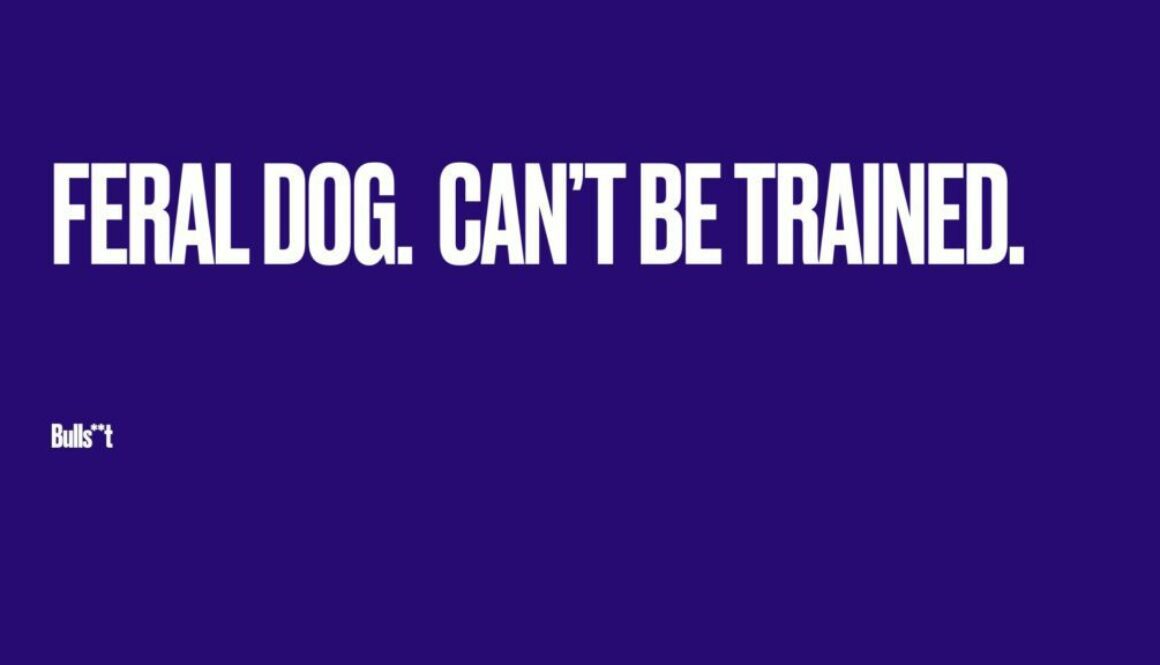
This is an old video being reposted.
Listen to these dog owners recount their story and experience having rescued the dog off the streets.
What it was like for them, trying to integrate the dog into their lives, an urban environment, full of distractions and other dogs.
Another training school had told them that there was nothing they could do to help this dog and had relegated this dog to having to be boarded up behind sheets of plywood to keep it from trying to attack the other dogs in class.
As much as I am not a fan of dog parks, we filmed this video in a local dog park in order to show the dogs ability to coexist around other dogs and humans.
Hopefully this video will reach those of you who are in need of help with your dogs and provide a glimmer of hope to not give up on your dogs, on your training and on your search for finding the right trainer to help you with your dog.

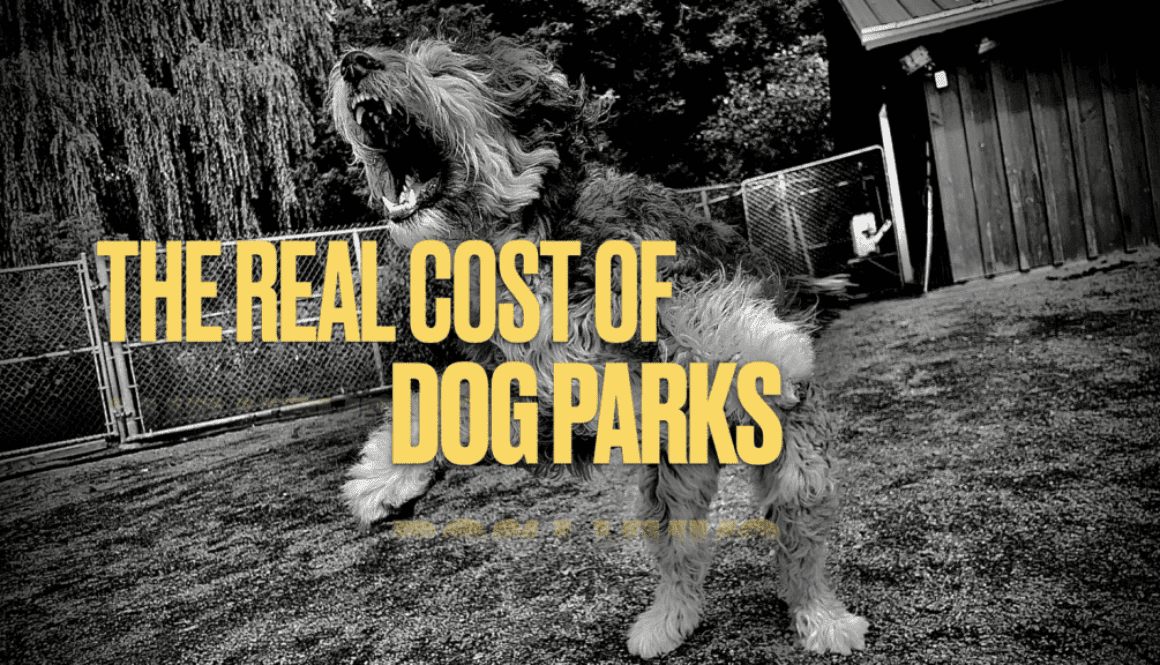
Dog parks are a popular place for dog owners to bring their K9 buddies. They get to romp around and get some exercise and social interaction. Montreal (and its surrounding areas) is a very dog friendly city and as such has plenty of dog parks. So do the surrounding areas such as the West Island, the south shore and Laval.
Downtown Montreal has the well known Percy Walter Park. Westmount has Murray Hill, Landsdowne and of course the Summit. So many burrows with dogs parks for owners to bring their dogs to enjoy off leash freedom and playtime with other dogs.
The question is should you bring your dog to a dog park?
I am not going to outright tell you shouldn’t bring your dog to a dog park. It is of course your decision to make. However, I will tell you that after training dogs professionally for 3 decades the risks outweigh the rewards in just about any case you can imagine.
I’d invite you to read my emails regarding the impact dog parks have had on dogs who were previously social. Each day I receive emails telling me how a dog who previously was social is now terrified of dogs as a result of a fight, or an attack. In many instances just being overwhelmed by a dog or group of dogs who meant no harm but came on too strong. I also receive emails from folks who know their dog has issues with other dogs. Yet they continued to bring their dog to a dog park in hopes the situation would resolve itself. Despite their hopes – their dog has now left a path of destruction in its wake – infecting other dogs to mimic the behaviour they were exposed to.
Don’t forget that when you’re at the dog park, you are amongst other dog lovers. What that means is training your dog to not jump up is likely to be ignored by others who will find your dog “so adorable” for jumping and reward that behaviour amongst other behaviours you’re trying to discourage.
Of course it’s all done in the name of fun and they mean well but it comes at a cost and you need to understand how this impacts your training.
You also must understand that this is teaching your dog that the ultimate high point of their day is playing with and engaging with other dogs then of course while you’re out on a walk, your dog is much more likely to be distracted by other dogs and your training is going to be much more challenging as a result.
Not to mention the fact that you will never be as interesting to your dog as the other dogs are because you train your dog that all play excitement comes from the outside instead of you.
Various dogs in for training @ the kennel being well matched with similar dogs in terms of energy, playfulness, level of physicality during play. In other words: Well matched dogs who can be trusted together to be safe and have a good time and positive experience.
Becoming your dog’s real best buddy – means an investment of yourself in terms of time, energy and understanding/addressing your dog’s needs. Here are some suggestions you can use to take steps in the right direction.
All of these things will help you form a bond and relationship with your dog that will only benefit you both for all your years to come. Have your dog interact with other known dogs who are safe and compatible as a complementary part of your lives and now you’ll have a much better relationship with your dog and still fulfill his/her need for a dog buddy.

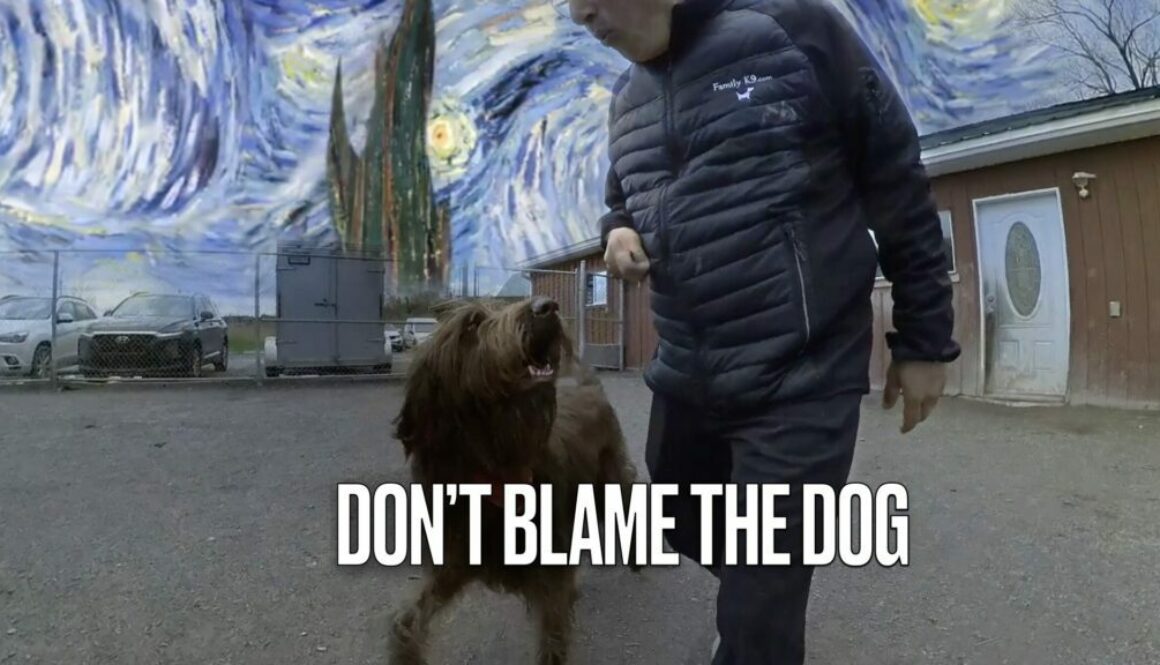
That’s what this dog’s first trainer did.
Imagine sending your dog to a trainer and when you get your dog back, several things are wrong:
This is exactly what happened to Ouspi’s owners after they sent him to a trainer for what they believed to be an obedience training program to help them live with their young, playful, dog and family, including three young children.
After this experience and by the time they got to me for a consultation they were not only doubtful about their dog and if he would be a good fit with their family, but also very sceptical of dog training, and dog trainers, since they had been burned before.
This video documents, not only Ouspi’s training journey, and the wonderful Dog that he is but also shows several important points about the transfer lesson with his owner Victor.
As you can Ouspi did great.
Ouspi used to pull on leash as many dogs do.
You can see in the video that Ouspi has a wonderful heel. He walks nicely on a loose leash, and is both attentive & cooperative.
I then teach Victor how to properly reinforce the heel command and Ouspi again works just as well for Victor as he did for me, his trainer.
We continued through our lesson going over other exercises and concepts, and then we get to the end of our lesson when they are about to go back home together and Victor presents me With a wildcard:
“Do you think we can do something about this?”
I reply with “let’s see what’s going on” in order to determine what’s needed to fix it and voilà three minutes later, Ouspi is hopping in and out of the van for myself and then for his owner.
All said and done, pleasantries exchanged, chitchat had between us, and they drove off to go home and begin their new life together.
Ouspi is most definitely not a dumb dog. He’s a wonderful, vibrant, playful, kind, trainable dog who needed a fair chance with clear instruction. He’s actually an easy dog in many respects and was always fun to work with.
He shows not only some really nice obedience and focus but also a real love to work and interact with people which makes training easy if you are a skilled and enthusiastic dog trainer.
It is so easy and such a copout to blame the dog. A dog trainer should be an educator, a coach, and a motivator. We should be guiding & building our dogs up and challenging ourselves to continuously find the right way for the individual dog in front of us.
#conversationswithadogtrainer

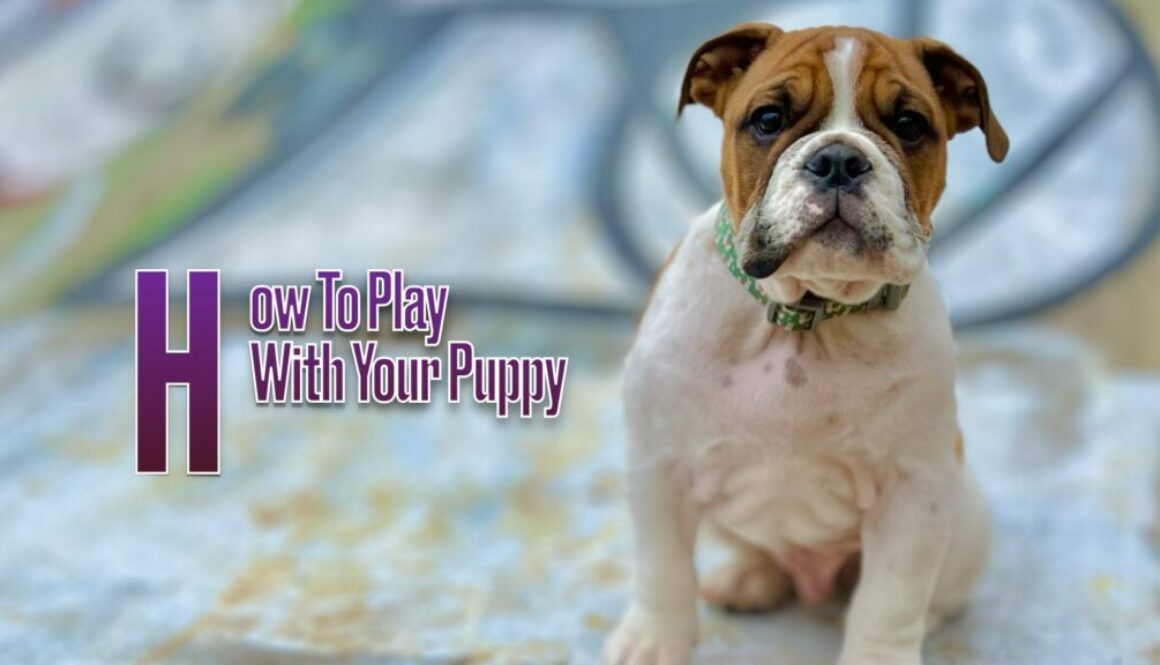
Make a point of playing fetch, playing tug-of-war, and teaching them that the highlight of their day and ultimately their existence is time shared with you.
Play with them like you mean it. Put your heart and soul into it.
Play with them until you’re both exhausted and then keep going.
There are numerous benefits to this that we will explore in this dog training article and video
It’s no surprise that when people don’t do this with their dogs and they “socialize“ their dogs in all the wrong ways, such as dog parks, etc. the dogs learn to be hyper social and their focus for the external creates behavioural issues. By using external stimuli such ans other dogs to play with, dog owners are teaching a convoluted value system that fun is to be had away from you. It’s wonderful that dogs like other dogs. Of course this is helpful in preventing unwanted aggression and they can have fun together, but it comes at a price. Especially if that is the primary means of stimulation and exercise. There is also the risk of the unknown dogs, fights, bullying and aggression. In the best of circumstances you risk a hyper reactive, uncontrollably social dogs.
What this also means is that the hyper social dogs will lose their ability to focus on their person because they’ve been conditioned that the highlight of their day is away from their person and with other dogs.
Think about it this way: who is a dog going to relate to easier?
Another species? One who doesn’t play with them, form a bond through shared mutual interests and activities, one who doesn’t create a backdrop of adrenaline, excitement and dopamine their interactions?
Or
One of their own who speaks their native language, who can run fast to chase and be chased. One who can entice them to play, jump/chase/bite and feel free. Or a boring human who is nothing more than an Uber to the dog park.
True socialization is teaching a dog to be comfortable in their environment and ultimately, I want my dog to be neutral to things around him/her so that communication between us is facilitated. Friendly, open and neutral is ideal.
Hyper social and Being hell bent on interacting with everyone and everything does not facilitate living with a dog and creates a dog with a hectic mind.
In our modern world think of the equivalent being trying to have a conversation and the other person is constantly looking at their phone.
It renders the conversation and ultimately interaction and communication meaningless.
The benefits to this are so numerous.
By teaching this to your puppy they will learn:
#ConversationsWithADogtrainer #PlayWithYourPuppy #DogTrainer #Caninehumanbond #MontrealDogTrainer #MontrealDogTraining #DogTrainingTips #familyk9

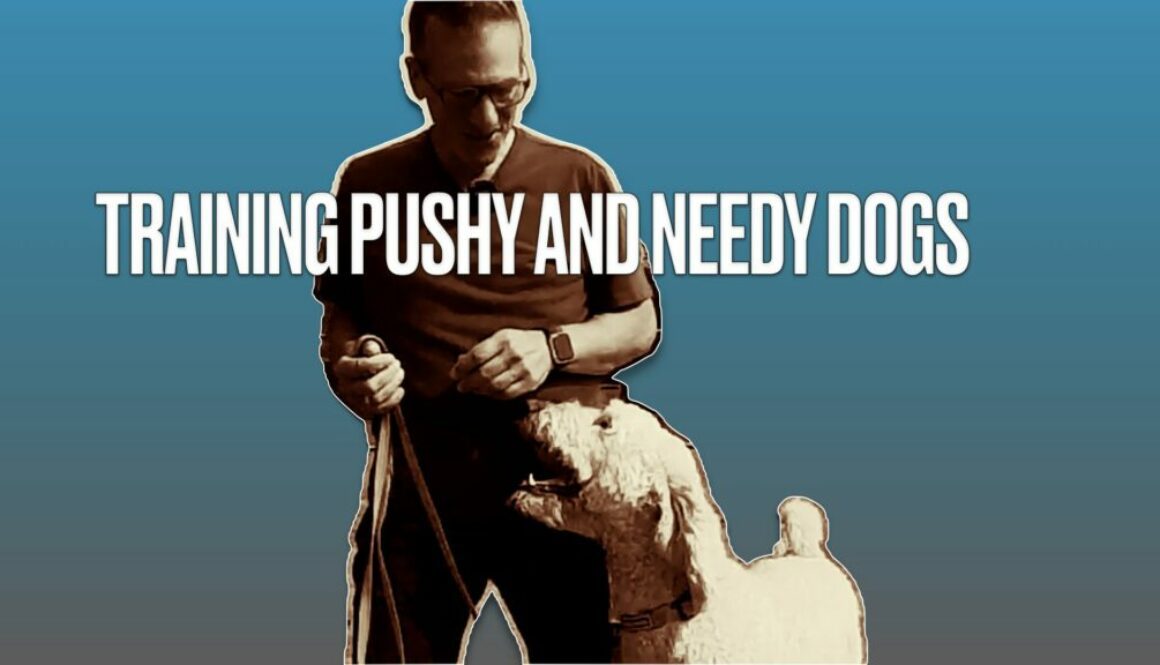
Dogs are social creatures, which is one of the reasons why we love them so much. Is there such a thing as “too much” attention or affection?
Absolutely.
Sharing our lives, and our hearts with our dogs can bring lots of joy for everyone, but like everything else in life it’s important to understand the rules so that we don’t fall into problematic patterns.
Dogs want our attention and affection and of course we want to give it to them, it is best to understand the impact of our actions on earth dogs in order to understand how to enjoy your relationship with your dog without creating issues.
Teaching your dog a set of skills and putting them to use as a lifestyle and a way of interacting with your dog will help you create a solid foundation based on mutual respect, understanding, and will create a bond like no other.
I’ve trained thousands of clients over the years and all the dogs who come in for training learn this in just a couple of short weeks and even the older dogs take to this just wonderfully.
It’s important to be a clear and concise leader, so that your dog understands what is expected of them, and how they can win what they want from us by giving us what we want from them.
Dog training equals win/win for Human and Canine!


One of them is:
“Human – you come and chase me!” .
Watch Ouspi – a young Labradoodle try this and see how we shape into a nice game of fetch in a short time.
and you have to know what cues and signals you are giving off and what the perception of your movements and actions are in order to not trigger undesired behaviour.
Look for Ouspi in an upcoming video featuring his obedience training and the transfer lesson with his owner.
